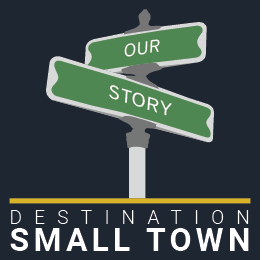Since the founding of our communities, organizations, businesses and citizens have stepped forward to build and serve their community. Click on any of the logos below to learn about those who made this website possible! If you would like to learn about becoming a sponsor CLICK HERE!
Republic County, KS
County in Northeast KSRepublic county was organized on September 7, 1860, by James E. Van Natla; David and John Corey; J. C. Riley, D. N. Davis; Daniel, Conrad, and John Myers. Containing the cities of Munden, Republic, Narka, Belleville, Courtland, Agenda, Cuba and Scandia, this county was named for the Republican River.
Early settlers were well protected within the county by the opening of the military road along the California Trail through the county in 1857, which increased military vigilance. In 1866 the county seat was located in Belleville, but in 1870, a petition requested a new election among Belleville, Scandia, and Salt City for the county seat. Belleville won the election causing great dissension in the county. The building of the Pawnee Indian Museum near Republic to preserve the site of the Pawnee Indian Republic was a major event.
Minersville was a community that formed in 1869 after the discovery of coal deposits. It no longer exists. The first church was Fairview Methodist Church organized in Grant Township, in 1870. The building was constructed in 1872. The first county fair, called the Corn Jubilee, was held in 1890 in Belleville. It is now known as the North Central Kansas Free Fair, the third largest fair in the state. The first school district was organized in 1867.
Republic was home to J. O. Savage, author of History of Republic County, 1883-1901. As well as Agnes Tolbert, who was used as a basis for Log Cabins Along Salt Creek.
There are many interesting sites within Republic, such as the Stevenson House, McHugh Rock House, Larson House, John Peterson Homestead, Rose Creek House (first above ground), John Horedek House, Old Stone House, Wohlfort House, Chruma-Makalous Homestead and Heaton-Stepanek Homestead.
- County: Republic County, KS
- Region: Northeast KS
Destination Republic County, KS
- Sponsors
- Towns
- Businesses
- Community Organizations
- Faith Organizations
- Festivals and Events
- Points of Interest
- Veterans
Learn how to contribute to any of the above categories.
Towns of Republic County, KS
The small towns of the Midwest are rich in history and a great way of life! Below you can visit and learn about the small towns we call home! Towns that have their name highlighted have become FEATURED TOWNS. Businesses/organizations from these towns have stepped forward as SPONSORS enabling us to include (or will include as acquired) stories and website links to ALL their community organizations (chambers, groups and departments, etc.), stories and website links to ALL their points of interest, annual festivals/events and stories done about their citizens, veterans and faith community. To learn how to become a featured town CLICK HERE!
Businesses of Republic County, KS
The businesses of our towns are truly the lifeblood of each community, click on any businesses below to learn about them, to learn how to add your business to your town and county page CLICK HERE!



